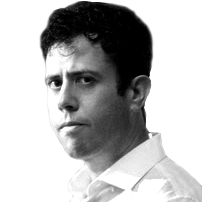Until very recently, even speculating that the coronavirus pandemic might have resulted from an accidental lab leak was liable to get one tagged as a conspiracy theorist by influential figures in politics, media, and the global public-health bureaucracy.
PolitiFact designated stories furthering the theory as falsehoods, while Facebook simply removed any offending posts. “Someday we will stop talking about the lab leak theory and maybe even admit its racist roots,” New York Times science correspondent Apoorva Mandavilli tweeted as late as May 26. “But alas, that day is not yet here.”
Yet mere hours before Mandavilli’s assertion—since deleted—President Joe Biden announced that U.S. intelligence officials were investigating the possibility that the virus had leaked accidentally from the Wuhan Institute of Virology. An open letter signed earlier that month by 18 leading scientists stated that “theories of accidental release from a lab and zoonotic spillover both remain viable.”

PolitiFact flagged its “Pants on Fire” ratings “pending a more thorough review.” Facebook lifted its ban. And in as close to an official sign as possible that endorsing the lab-leak hypothesis will no longer get one expelled from the salons of bien pensant liberalism, Jon Stewart appeared on fellow Daily Show alum Stephen Colbert’s Late Show to vent that the disease “is the same name as the lab!”
That a critical mass has finally begun to take the hypothesis seriously is due in large part to the efforts of Nicholas Wade, a 79-year-old Englishman and former longtime science writer for The New York Times. Wade told me that he pitched a piece entertaining the lab-leak theory “to outlets across the political spectrum, left, right and center.” But after “an unbroken stream of rejections,” he decided to upload his essay on May 2 to the self-publishing Web site Medium. Given the intimidating length of “Origin of COVID—Following the Clues,” Wade expected it “to sink like a stone.”
To its author’s surprise, the 10,000-word investigation went viral (in the Internet sense) and swiftly transformed the nature of the debate over the pandemic’s origins. The Bulletin of the Atomic Scientists republished it on May 5, and it has since been cited by news outlets around the world. Wade’s erstwhile colleague Donald McNeil published his own Medium piece in response, titled “How I Learned to Stop Worrying and Love the Lab-Leak Theory*.”

In meticulous detail, Wade explained the “absurdly large holes” in the contention that the coronavirus emerged naturally, and noted troubling conflicts of interest among its proponents. To pick just one of the many pieces of evidence he marshaled: while proof of the zoonotic origins of the last major coronavirus outbreak (the SARS epidemic of 2002–04) emerged within four months, to this day no animal population has been shown to be the source of the coronavirus, nor, despite the testing of some 80,000 individual animals, has any species been identified as the intermediate host.
But the virus was very well adapted to humans and did not appear to have mutated from another species. “Its genome shows little diversity because the hallmark of lab cultures is uniformity,” Wade writes.
Given the intimidating length of “Origin of COVID—Following the Clues,” Wade expected it “to sink like a stone.” To its author’s surprise, the 10,000-word investigation went viral.
Wade was uniquely positioned to question the consensus view of the coronavirus’s origins. The son of an actress and an M.I.5 agent from Aylesbury, in southeast England, he “was always interested in science but didn’t want to do it, which left the choice of writing about it.” Working in the news department of Science magazine in the 1970s, Wade was riveted by the ruthless 21-year-long rivalry between two scientists to identify a class of brain hormone and who shared the 1977 Nobel Prize for Medicine for their discoveries. Out of this came Wade’s first book, The Nobel Duel, which revealed some of the less than noble character traits of those engaged in the high-stakes world of scientific research.
“Naïvely shocked” by a series of scandals involving scientists behaving badly, Wade next co-authored, with William Broad, Betrayers of the Truth: Fraud and Deceit in the Halls of Science. “The experience of writing these two books made me more aware of the careerist aspects of the scientific enterprise and of the non-scientific factors that can shape the search for scientific truth,” Wade says. (Wade has himself been the subject of controversy, publishing a book in 2014, A Troublesome Inheritance, on the fraught subject of race and genetics.)

The rush to discredit the lab-leak theory appears to be a case of scientists succumbing to peer pressure, a phenomenon mirrored (and exacerbated) by journalists shying away from stories that diverge from progressive orthodoxy. “You rely on your fellow virologists for almost everything in your professional life, from giving jobs to your students, writing references, accepting your papers in their journals, and above all approving your grant applications that come before the peer-review committees that advise the National Institutes of Health,” Wade says. “Annoy any sizable group of these professional colleagues and your career is finished.”
Considering the 45th president’s penchant for terminological inexactitude, the instinct to contradict everything he said, including his claim that the Chinese government was responsible for the coronavirus, may have been understandable. But it was nonetheless lazy, especially on the part of those for whom “trust the science” has become a religious mantra.
A better approach is the skepticism modeled by Wade at the end of a long career spent puncturing fashionable groupthink. “However substantial” the case that the coronavirus escaped from a lab may be, he concludes, it still “falls short of proof.”
James Kirchick is the author of The End of Europe: Dictators, Demagogues, and the Coming Dark Age


